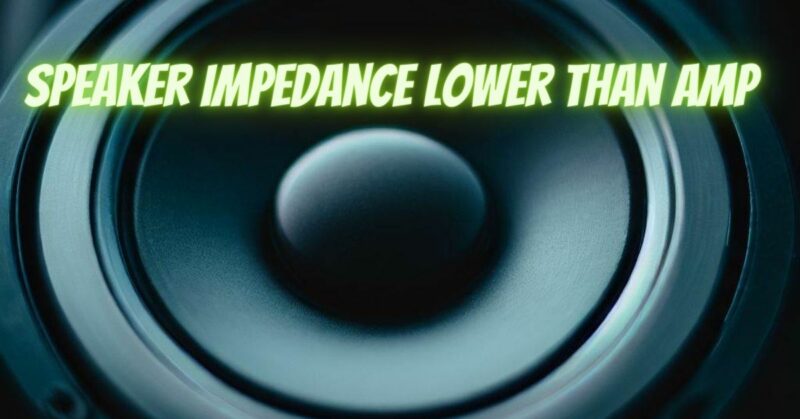The world of audio equipment is a complex realm where every component’s compatibility matters for optimal performance. When the speaker impedance is lower than that of the amplifier, a unique set of challenges emerges. In this article, we’ll delve into the implications and potential consequences of having a speaker impedance that is lower than the amplifier’s recommended range.
Understanding Speaker Impedance and Amplifiers:
Speaker impedance, measured in ohms (Ω), signifies the resistance a speaker presents to the electrical current from the amplifier. Amplifiers are designed to work within specific impedance ranges to ensure efficient power transfer and optimal sound quality.
Consequences of Lower Speaker Impedance:
- Power Overload: When the speaker impedance is lower than that of the amplifier, the amplifier can deliver more power than the speaker can handle. This can result in overloading the speaker and potentially causing damage due to excessive heat and stress.
- Potential Distortion: Lower speaker impedance can lead to the amplifier pushing more current through the speaker coil. This can cause the speaker to move erratically and result in distortion or clipping, compromising sound quality.
- Amplifier Strain: Operating an amplifier with a load that has significantly lower impedance than its recommended range can strain the amplifier. The amplifier might struggle to deliver the necessary power while maintaining stability.
- Safety Concerns: An amplifier operating with a load that has much lower impedance can lead to unsafe conditions. The amplifier might become unstable, and the risk of electrical issues and component damage increases.
Mitigating Challenges:
- Amplifier Protection: Some modern amplifiers include protection circuits that detect impedance mismatches and adjust the output to prevent damage. However, relying solely on these circuits isn’t recommended.
- Upgrading Speakers: If your speakers’ impedance is consistently lower than your amplifier’s recommended range, consider upgrading to speakers with a higher impedance that matches your amplifier’s specifications.
Preventive Measures:
- Matching Impedance: Always aim to match the speaker impedance with the recommended range of the amplifier. This ensures proper power delivery, sound quality, and safety.
- Parallel Wiring: If you’re using multiple speakers, wiring them in parallel can lower the overall impedance. However, ensure that the total impedance remains within the safe range for your amplifier.
Maintaining the appropriate impedance matching between speakers and amplifiers is crucial for achieving optimal sound quality, preventing damage, and ensuring safety. When the speaker impedance is lower than the amplifier’s recommended range, the consequences can range from power overload and distortion to amplifier strain and potential safety concerns. To ensure a harmonious audio experience and protect your equipment, always adhere to the manufacturer’s recommended impedance specifications and avoid operating your amplifier with loads that fall significantly below its specified range.


